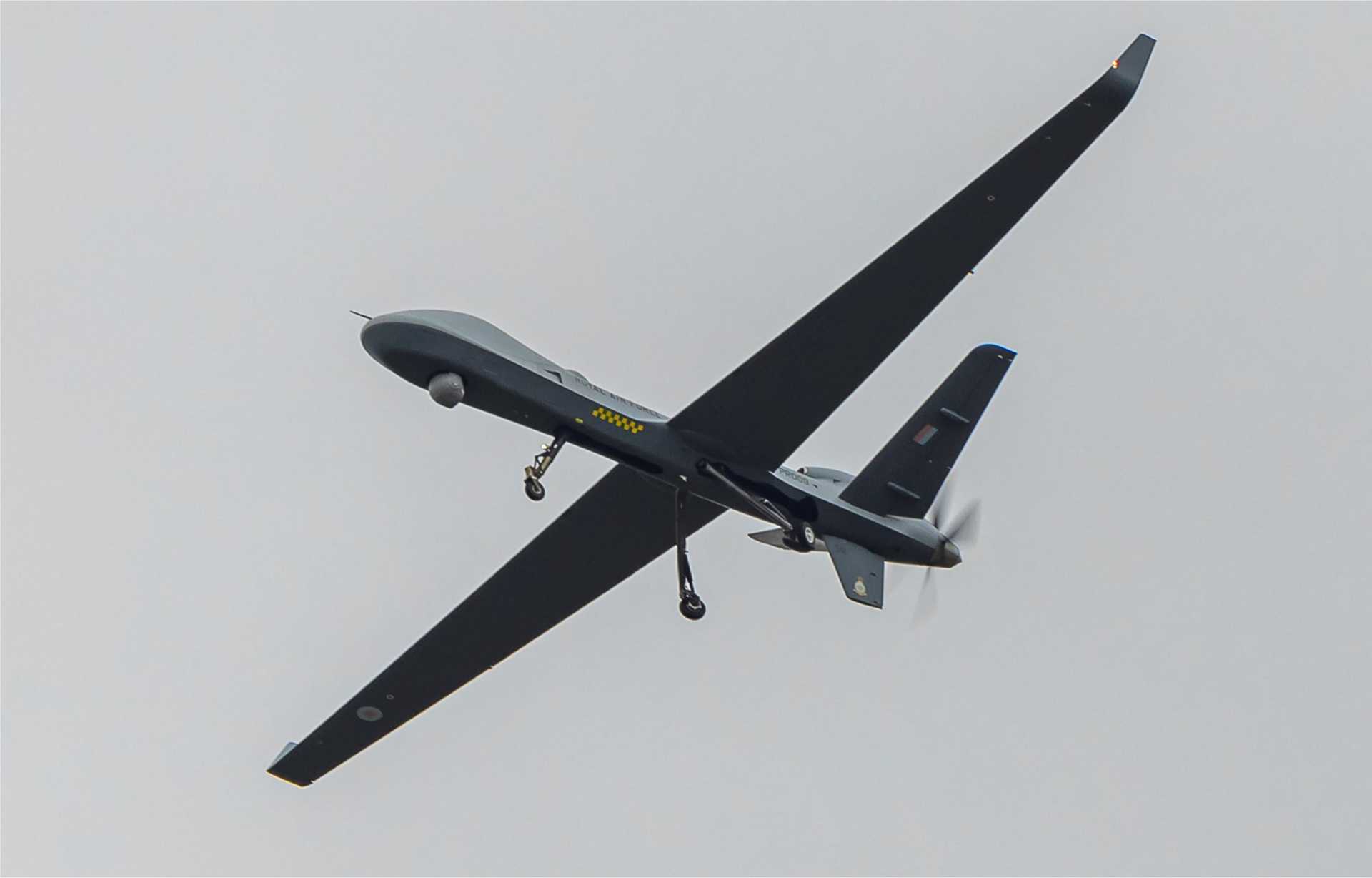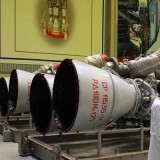British Royal Air Force conducts flight testing of its new Protector RG1 Remotely Piloted Air System

{loadposition bannertop}
{loadposition sidebarpub}
On February 12, 2025, the British Royal Air Force (RAF) announced that it has commenced flight testing of the Protector RG1 Remotely Piloted Air System (RPAS) from its home base at RAF Waddington, Lincolnshire. This marks a significant milestone in the aircraft’s development, as it undergoes rigorous evaluation ahead of its full integration into RAF service. Designed to replace the MQ-9 Reaper, the Protector RG1 represents the next generation of long-endurance, multi-role RPAS, capable of operating in all classes of UK airspace while providing advanced intelligence, surveillance, reconnaissance, and precision-strike capabilities.Follow Army Recognition on Google News at this link
The British Royal Air Force Protector RG1 Remotely Piloted Air System (RPAS) undergoing flight testing at RAF Waddington, Lincolnshire, as part of Phase 3 of its test and evaluation programme. The advanced UAV is set to enhance the RAF’s intelligence, surveillance, and precision-strike capabilities. (Picture source: British Air Force)
British RAF (Royal air Force) Waddington is at the forefront of the UK’s future intelligence, surveillance, and reconnaissance (ISR) aviation platforms. The latest trials are part of Phase 3 of the test and evaluation programme, which aims to ensure the Protector RG1 meets the operational requirements of the RAF. Testing is being conducted under the supervision of 56 (Test & Evaluation) Squadron, with support from 31 and 54 Squadrons, and an all-UK crew operating the aircraft from the newly established Certifiable Ground Control Station (CGCS) at RAF Waddington.
The Protector RG1, developed by General Atomics Aeronautical Systems, Inc. (GA-ASI), is a certifiable variant of the MQ-9B SkyGuardian. Unlike its predecessor, it is designed to operate seamlessly in civilian airspace, allowing for greater versatility in both military and non-military missions. The RAF has received its first four Protector aircraft, with three additional units currently undergoing testing in the United States. Engineers from 31 Squadron have completed aircraft assembly and initial ground testing, paving the way for full-scale operational evaluation by 56 Squadron.
Equipped with state-of-the-art Intelligence, Surveillance, Target Acquisition, and Reconnaissance (ISTAR) capabilities, the Protector RG1 can fly for over 48 hours and reach altitudes of up to 12,000 meters, making it one of the most advanced RPAS in service. Its multi-sensor payload includes electro-optical/infrared (EO/IR) sensors, synthetic aperture radar (SAR), and signals intelligence (SIGINT) suites, allowing for high-precision surveillance and reconnaissance. The aircraft is also armed with Brimstone 3 precision-guided missiles and Paveway IV laser-guided bombs, significantly enhancing its strike capabilities.
One of the Protector RG1’s defining features is its ability to integrate into controlled airspace, making it suitable for search and rescue (SAR), border security, disaster relief, and military aid to civilian authorities (MACA) missions. This marks a significant improvement over previous RPAS platforms, which were largely restricted to military airspace. The ability to conduct domestic security and humanitarian operations gives the Protector RG1 an expanded role beyond traditional military applications.
The UK Ministry of Defence (MoD) has committed to acquiring 16 Protector RG1s, all of which will be based at RAF Waddington, the heart of the RAF’s remotely piloted aircraft operations. The base will serve as the primary launch, recovery, and training hub, not only for British crews but also for allied nations through the NATO Flight Training Establishment (NFTE). As a key element of the UK’s future multi-domain operations strategy, the Protector RG1 will provide persistent ISR coverage, global reach, and precision-strike capability, ensuring the RAF remains at the forefront of modern airpower.
The ongoing test programme will continue throughout 2025, with full operational capability (FOC) expected by 2026. Once fully integrated, the Protector RG1 will become a cornerstone of the RAF’s air combat and ISR strategy, delivering greater flexibility, enhanced interoperability with NATO allies, and a significantly reduced risk to personnel.

{loadposition bannertop}
{loadposition sidebarpub}
On February 12, 2025, the British Royal Air Force (RAF) announced that it has commenced flight testing of the Protector RG1 Remotely Piloted Air System (RPAS) from its home base at RAF Waddington, Lincolnshire. This marks a significant milestone in the aircraft’s development, as it undergoes rigorous evaluation ahead of its full integration into RAF service. Designed to replace the MQ-9 Reaper, the Protector RG1 represents the next generation of long-endurance, multi-role RPAS, capable of operating in all classes of UK airspace while providing advanced intelligence, surveillance, reconnaissance, and precision-strike capabilities.
Follow Army Recognition on Google News at this link
The British Royal Air Force Protector RG1 Remotely Piloted Air System (RPAS) undergoing flight testing at RAF Waddington, Lincolnshire, as part of Phase 3 of its test and evaluation programme. The advanced UAV is set to enhance the RAF’s intelligence, surveillance, and precision-strike capabilities. (Picture source: British Air Force)
British RAF (Royal air Force) Waddington is at the forefront of the UK’s future intelligence, surveillance, and reconnaissance (ISR) aviation platforms. The latest trials are part of Phase 3 of the test and evaluation programme, which aims to ensure the Protector RG1 meets the operational requirements of the RAF. Testing is being conducted under the supervision of 56 (Test & Evaluation) Squadron, with support from 31 and 54 Squadrons, and an all-UK crew operating the aircraft from the newly established Certifiable Ground Control Station (CGCS) at RAF Waddington.
The Protector RG1, developed by General Atomics Aeronautical Systems, Inc. (GA-ASI), is a certifiable variant of the MQ-9B SkyGuardian. Unlike its predecessor, it is designed to operate seamlessly in civilian airspace, allowing for greater versatility in both military and non-military missions. The RAF has received its first four Protector aircraft, with three additional units currently undergoing testing in the United States. Engineers from 31 Squadron have completed aircraft assembly and initial ground testing, paving the way for full-scale operational evaluation by 56 Squadron.
Equipped with state-of-the-art Intelligence, Surveillance, Target Acquisition, and Reconnaissance (ISTAR) capabilities, the Protector RG1 can fly for over 48 hours and reach altitudes of up to 12,000 meters, making it one of the most advanced RPAS in service. Its multi-sensor payload includes electro-optical/infrared (EO/IR) sensors, synthetic aperture radar (SAR), and signals intelligence (SIGINT) suites, allowing for high-precision surveillance and reconnaissance. The aircraft is also armed with Brimstone 3 precision-guided missiles and Paveway IV laser-guided bombs, significantly enhancing its strike capabilities.
One of the Protector RG1’s defining features is its ability to integrate into controlled airspace, making it suitable for search and rescue (SAR), border security, disaster relief, and military aid to civilian authorities (MACA) missions. This marks a significant improvement over previous RPAS platforms, which were largely restricted to military airspace. The ability to conduct domestic security and humanitarian operations gives the Protector RG1 an expanded role beyond traditional military applications.
The UK Ministry of Defence (MoD) has committed to acquiring 16 Protector RG1s, all of which will be based at RAF Waddington, the heart of the RAF’s remotely piloted aircraft operations. The base will serve as the primary launch, recovery, and training hub, not only for British crews but also for allied nations through the NATO Flight Training Establishment (NFTE). As a key element of the UK’s future multi-domain operations strategy, the Protector RG1 will provide persistent ISR coverage, global reach, and precision-strike capability, ensuring the RAF remains at the forefront of modern airpower.
The ongoing test programme will continue throughout 2025, with full operational capability (FOC) expected by 2026. Once fully integrated, the Protector RG1 will become a cornerstone of the RAF’s air combat and ISR strategy, delivering greater flexibility, enhanced interoperability with NATO allies, and a significantly reduced risk to personnel.




